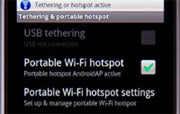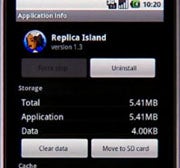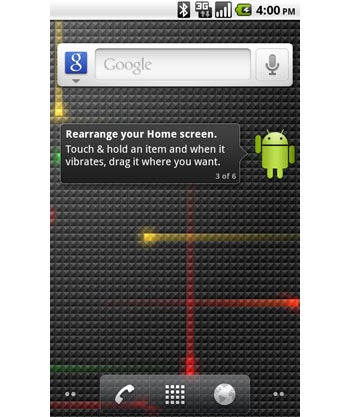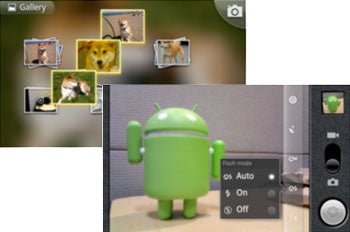Monday, May 31, 2010
Friday, May 28, 2010
One Laptop Per child re-invent itself for low cost tablet
 The MIT-hatched nonprofit that has tried to produce a $100 laptop for children in the world’s poorest places is throwing in the towel on that idea — and jumping on the tablet bandwagon.
The MIT-hatched nonprofit that has tried to produce a $100 laptop for children in the world’s poorest places is throwing in the towel on that idea — and jumping on the tablet bandwagon.One Laptop Per Child’s next computer will be based on chip maker Marvell Technology Group’s Moby tablet design. Marvell announced a prototype of the device this year and said it costs about $99.
The new tablets will have at least one video camera. They’ll sport Wi-Fi connections to the Internet and “multi-touch’’ screens, and have enough power to play high-definition and 3-D video. Marvel hopes to make the screens 8.5 inches by 11 inches, the size of a standard sheet of paper. Unlike Apple Inc.’s iPad tablet, the device will also work with plug-in peripherals such as mice.
Negroponte said he eventually wants the tablets to run some version of the free Linux operating software. But the first generation of the tablet will probably use Android, the mobile-device operating system from Google Inc., or something similar.![]()
Thursday, May 20, 2010
Sweet new features of Android 2.2 Froyo!!!
The complete details from: http://www.pcworld.com/article/196833/google_android_22_questions_and_answers.html
What are the biggest new features in Android 2.2?
Where to start? The most significant core changes to the Android operating system revolve around these four points:
 • Speed: Android 2.2 runs two to five times as fast as previous versions, thanks to a new Dalvik JIT compiler that allows for better CPU performance. And with a brand new Javascript engine, the stock Android browser is also two to three times faster than it was in Android 2.1. Plus, app switching should be noticeably smoother due to improved memory reclaim in the Froyo build.
• Speed: Android 2.2 runs two to five times as fast as previous versions, thanks to a new Dalvik JIT compiler that allows for better CPU performance. And with a brand new Javascript engine, the stock Android browser is also two to three times faster than it was in Android 2.1. Plus, app switching should be noticeably smoother due to improved memory reclaim in the Froyo build.
• Flash: Froyo will be the first Android edition with full support for Adobe Flash and Adobe Air. (If you don't want to use it, you don't have to. If you do, you can. Choice -- now, that's refreshing!)
• Tethering: Android 2.2 has built-in support for tethering, though carriers will likely have to choose to allow it. Of course, you can turn your Android phone into a wireless modem on your own -- right now, with or without Android 2.2 -- if you know how.
• Mobile hotspot support: Along with tethering comes the ability to  use your phone as a Wi-Fi hotspot, spreading your 3G connection wirelessly to other devices. Again, carriers will presumably have to sign off on this and may or may not allow it for free.
use your phone as a Wi-Fi hotspot, spreading your 3G connection wirelessly to other devices. Again, carriers will presumably have to sign off on this and may or may not allow it for free.
(Time out: Are you seeing the Android 2.2 images on this page? If not, you may want to click here to view the story in its original location. That'll let you see screenshots of all these tasty Froyo features in action.)
How will apps change with Android 2.2?
Hey, good question; you're clearly an intelligent and amiable individual. The answer is that with Froyo, Google's giving us a bunch of new ways to take advantage of apps from the Android Market and beyond. The highlights:
• SD card installations: Yep, you'll finally be able to install apps  on your SD card, smashing the space limitations of Android versions past. You'll be able to select where you want each app to be installed -- SD card or internal storage -- and even toggle it back and forth with a couple of clicks later.
on your SD card, smashing the space limitations of Android versions past. You'll be able to select where you want each app to be installed -- SD card or internal storage -- and even toggle it back and forth with a couple of clicks later.
• Auto-update and update-all functionality: Froyo introduces the option to have your apps automatically update themselves when new versions roll in; you just configure the permissions to your likings and Android does the rest. If you decide to stick with manual updates, Android 2.2 will let you update multiple apps at the same time with a new "Update All" button inside the Android Market.
• App backup: A new option within the Android settings menu lets you back up and restore your apps' data. You could use this to recover lost information or even just move data and settings from one phone to another.
• Cloud-to-device messaging: It's as cool as it sounds. Android 2.2's new cloud-to-device messaging capability means developers can build in Web-based functions that will communicate directly with your phone. So, for example, you could click on a button in a Google Map on your PC and have it automatically open the same map -- complete with driving directions -- on your phone. Not too shabby.
Will Android 2.2 look any different?
The Froyo interface isn't substantially different from the Android 2.1 UI, but there are a few small tweaks: The home screen gains a new permanent bottom-bar with links to the phone app and browser; that bar stays in place even as you switch from one home screen panel to another.

If you're an Android newbie, Froyo has a new home screen tips widget that can help you learn the ins and outs of configuring your home screens.
 And the unlock screen in Android 2.2 gets a new twist: You'll be able to set it to have a numeric or alphanumeric PIN instead of just a swipe pattern, if you so choose.
And the unlock screen in Android 2.2 gets a new twist: You'll be able to set it to have a numeric or alphanumeric PIN instead of just a swipe pattern, if you so choose.
How about some Bluetooth voice dialing already?
Ask, and ye shall receive: I'm happy to report, my fellow Android enthusiasts, that Android 2.2 will in fact support Bluetooth voice dialing. It'll also have added support for Bluetooth-enabled docking stations and better compatibility with car-based kits.
What's this talk about a new Web-based Android Market?
 It isn't ready yet, but Google is working on an update to the Web-based Android Market that'll bring all sorts of new app options our way.
It isn't ready yet, but Google is working on an update to the Web-based Android Market that'll bring all sorts of new app options our way.
With Android 2.2 and the new Android Market, you'll be able to browse apps on your PC and then download them to your phone -- without ever plugging the phone in. The apps will be delivered over-the-air as soon as you complete the transaction.
Also in the works is a new music service that'll offer MP3 sales directly from the Web-based Android Market. The files will be automatically downloaded over-the-air to your phone with this feature, too.
Then there's the streaming: You'll eventually be able to stream any non-DRM music files from your PC to your Android phone. It'll be made possible with the help of software by Simplify Media, which Google revealed it had recently acquired for use within Android.
So far, there's no set date on the launch of any of these features.
Will Froyo do anything for my phone's camera?
Android 2.2 does have a few small improvements to the camera function, namely a set of new on-screen buttons that'll make it easier to zoom and adjust your settings without having to dig around. The camcorder gains an LED flash option for nighttime videos (you're welcome, Paris), and also new options for optimizing video size and quality for MMS or YouTube uploads.

On a related note, Android 2.2's Gallery app gets a nifty new feature that'll let you use a zoom gesture to look inside stacks of photos.
Anything new on the enterprise front in Android 2.2?
You'd better believe it, bucko. Android 2.2 boasts auto-account-discovery and calendar sync for Exchange, as well as beefed up enterprise security features such as remote wipe for administrators, minimum password settings, and lock-screen timeout. It'll also offer global address list look-up within the E-mail application, meaning users will be able to autocomplete names from a company's directory without having to mess with their personal contact lists.
Spiffy. So when will Android 2.2 come to my phone?
Early word is that the Froyo update will hit the Nexus One within the "next few weeks." The Motorola Droid is said to be scheduled for an update soon thereafter, allegedly in June. (Bear in mind, though -- especially Droid users -- past experience tells us that these target launch dates don't always work out as planned.)
HTC has indicated that most of its 2010-launched Android devices will be in line for a Froyo fix, likely sometime in the second half of the year. From the sounds of it, even the newly released Droid Incredible and soon-to-be-released EVO 4G will be on this same schedule.
For everyone else, it's a game of wait and see -- and, if you're a true Android fanboy, maybe salivate -- for the taste of Froyo.
Monday, May 17, 2010
LG releases first Android device – ships May 20

Another mobile maker, LG, has done it and has announced their very first Android-based device, the LG Ally, which you can pre-order starting today or get one in stores May 20.
The LG Ally features a QWERTY keyboard and a 3.2-inch tempered glass touch screen with tactile feedback. Based on the specs, 512MB ROM and 256MB RAM, along with a MSM7627 600MHz processor, clearly the LG Alley is a mid-range Smartphone.
However, with a 3.2-megapixel camera, 4GB microSD card pre-installed, Android 2.1 OS, and Wi-Fi. It isn’t that bad of a device for someone who wants an Android phone, but wont need much in the way of pure power.
Complete details:http://www.thetechherald.com/article.php/201019/5610/LG-releases-first-Android-device-%E2%80%93-ships-May-20
Verizon CEO: ‘We’re Working With Google on a Tablet’
 I know this could happen but not this soon. I am quite happy to see the trend is going upward as Google is pushing ahead to be THE mobile and tablet player with the Android OS.
I know this could happen but not this soon. I am quite happy to see the trend is going upward as Google is pushing ahead to be THE mobile and tablet player with the Android OS.Verizon CEO Lowell McAdam says that his company is working closely with Google on a tablet computer. The tablet will be based on the Android operating system.
While neither Verizon or Google would confirm the hardware partner, McAdam mentioned Google in an interview with the Wall Street Journal. “We’re working on tablets together, for example,” he said. “We’re looking at all the things Google has in its archives that we could put on a tablet to make it a great experience.”.....
Complete details story:
http://www.wired.com/gadgetlab/2010/05/verizon-c
 eo-were-working-with-google-on-a-tablet/?utm_source=feedburner&utm_medium=feed&utm_campaign=Feed%3A+wired%2Findex+%28Wired%3A+Index+3+%28Top+Stories+2%29%29
eo-were-working-with-google-on-a-tablet/?utm_source=feedburner&utm_medium=feed&utm_campaign=Feed%3A+wired%2Findex+%28Wired%3A+Index+3+%28Top+Stories+2%29%29
Monday, May 10, 2010
ICANN reveals first non-latins domain names
The first non-Latin domain names made their debut on the Internet on Wednesday
Choosing Arabic as the initial language, the Internet Corporation for Assigned Names and Numbers (ICANN) picked Egypt, Saudi Arabia, and the United Arab Emirates as the first three regions able to use country-code specific top-level domains (TLDs). This means people in those countries will now be able to type addresses for regional Web sites using their own native language characters.
So Lao language could be added in the near future. Something like ອານຸສັກ.ລາວ rather anousak.la. Cheers ICANN for their multilingual vision.
Complete details: http://news.cnet.com/8301-1023_3-20004429-93.html
Hacker Brings Android to the IPhone 3G, IPhone 3GS Up Next
Apple surely isn't happy about this
Much like the open platform Windows invaded the traditionally closed hardware platform of Apple's Macs -- first unofficially, and then later officially condoned -- Android is now establishing a beach head on Apple's coveted iPhone.
Hacker David Wang, better known as "planetbeing" on the internet, made waves a few weeks ago when he showed off a first generation (2G) iPhone that he got running a modified Android OS kernel. Wang is well know in the hacking community for being one of the key contributors to the iPhone 3GS jailbreak. This week he showed off Android running on the iPhone 3G, or the version with the "nasty plastic, easily scratched back", as Wang puts it.
More complete details: http://www.dailytech.com/Hacker+Brings+Android+to+the+IPhone+3G+IPhone+3GS+Up+Next/article18331.htm

